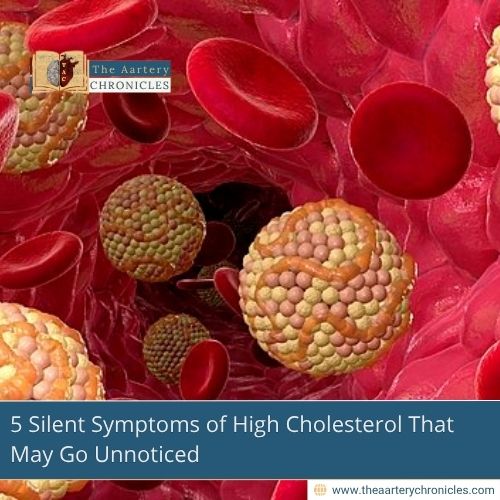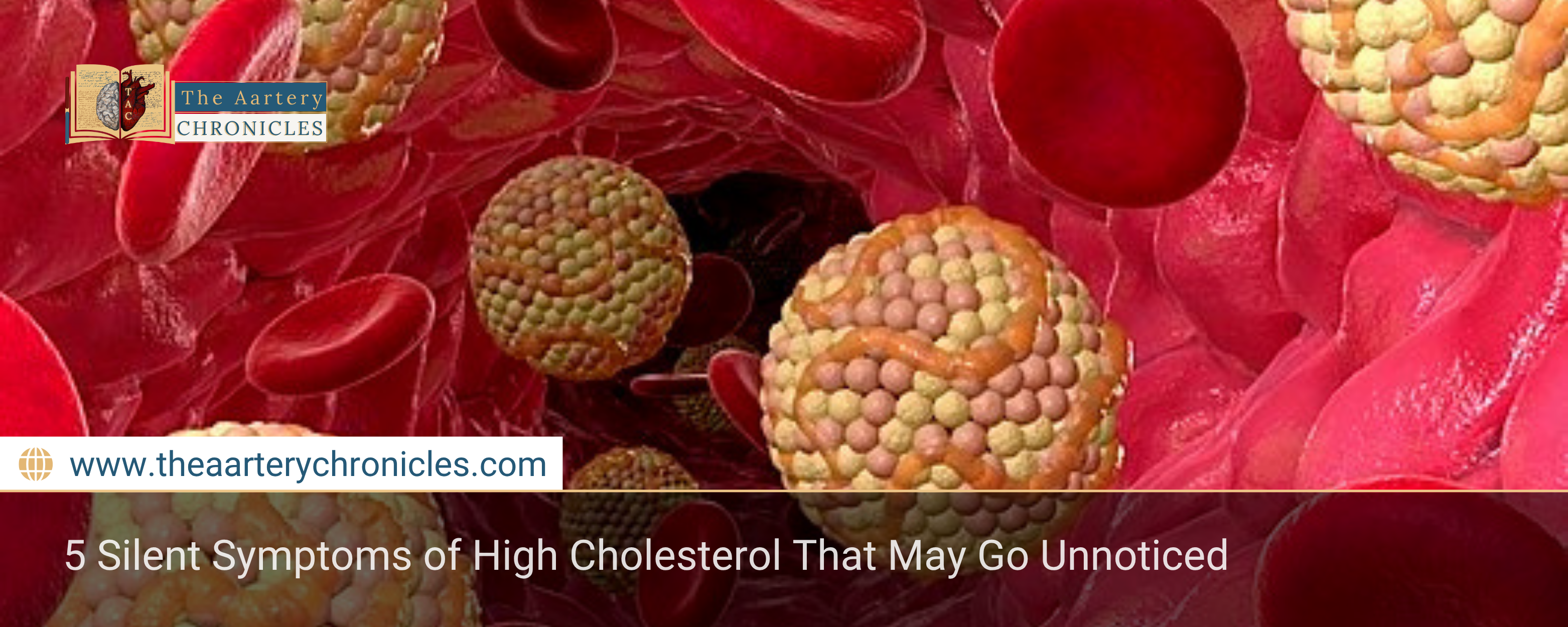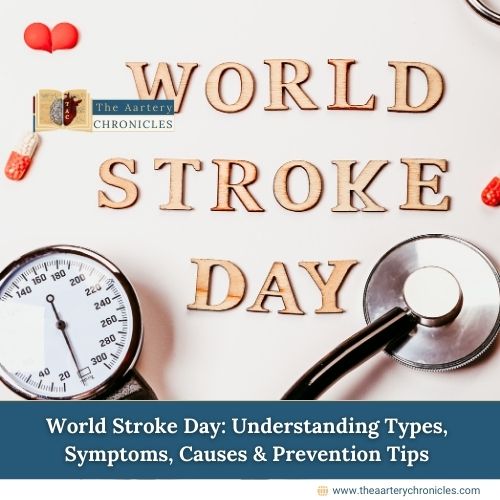

5 Silent Symptoms of High Cholesterol That May Go Unnoticed
Cholesterol is a fatty substance essential for building cells, but when levels become too high—especially low-density lipoprotein (LDL), often labelled the “bad” cholesterol—it can accumulate in arteries and lead to atherosclerosis, coronary artery disease, and cerebrovascular events such as stroke.
Many people walk around with elevated cholesterol levels without even realizing it. However, subtle clinical manifestations may be present, indicating elevated cholesterol levels prior to the onset of overt cardiovascular events.
Here are five silent symptoms of high cholesterol that often go unnoticed
Fatigue or Shortness of Breath
While fatigue can be linked to countless conditions, unexplained tiredness—especially after minimal physical exertion—may indicate reduced blood flow due to clogged arteries. When cholesterol builds up in the arterial walls, it limits the supply of oxygen-rich blood to muscles and organs, including the heart, which can lead to fatigue and breathlessness.
Chest Pain or Discomfort (Angina)
This is not always a dramatic, crushing pain. In many cases, people experience mild chest discomfort, tightness, or pressure, particularly during physical activity or stress. This occurs because the heart is not receiving enough oxygen due to narrowed coronary arteries. If the symptom is persistent or recurring, it should not be ignored.
Leg Pain While Walking (Claudication)
Pain or cramping in the legs during physical activity, such as walking, can be a sign of peripheral artery disease (PAD), which occurs when cholesterol plaques narrow the arteries supplying blood to the limbs.
Yellowish Deposits on the Skin (Xanthomas)
These are fatty deposits that can form under the skin, often around the eyes, elbows, knees, or heels. These painless deposits, known as xanthoma, are a physical indicator that cholesterol levels may be dangerously high. They can appear in people of all ages but are more common in those with a genetic predisposition to high cholesterol.
Sudden Dizziness or Slurred Speech
These symptoms can be warning signs of a transient ischemic attack (TIA) or stroke, conditions that can result from cholesterol-induced blockages in the brain’s blood vessels. Cholesterol-related blockages in arteries that lead to the brain can reduce blood flow and increase the risk of stroke. Intermittent dizziness, loss of balance, or coordination problems, especially in older adults, may be subtle signs of reduced circulation that warrant medical evaluation.
Yellow Deposits on Eyelids (Xanthelasma)
Yellowish patches or lumps around the eyelids are often associated with high cholesterol levels. These deposits are cholesterol-rich and may appear even in individuals without other obvious signs of high cholesterol.
Common Risk Factors That Worsen Cholesterol Levels
High cholesterol does not develop overnight. Often, it is the result of accumulated lifestyle choices and environmental factors. Recognizing and addressing these risk factors is a crucial step in preventing long-term cardiovascular complications. Some of the most common habits and conditions that can contribute to elevated cholesterol levels include:
Common Risk Factors That Worsen Cholesterol Levels
High cholesterol does not develop overnight. Often, it is the result of accumulated lifestyle choices and environmental factors. Recognizing and addressing these risk factors is a crucial step in preventing long-term cardiovascular complications. Some of the most common habits and conditions that can contribute to elevated cholesterol levels include:
- Excessive alcohol – Raises triglycerides and blood pressure.
- Smoking – Damages blood vessels and reduces HDL (good cholesterol).
- High salt intake – Increases blood pressure, worsening heart risks.
- Poor diet – A diet comprising nutrient-poor, energy-dense foods, particularly those high in saturated fats, refined sugars, and industrially processed components.
- Lack of exercise – Leads to weight gain and poor cholesterol control.
- Chronic stress – Affects fat metabolism and encourages unhealthy habits.
Preventing High Cholesterol: Lifestyle Choices That Make a Difference
High levels of low-density lipoprotein (LDL), commonly known as “bad” cholesterol, can significantly increase the risk of heart disease and stroke. Fortunately, many cases of high cholesterol can be prevented—or even reversed—through informed lifestyle changes. Here’s how you can take control of your cholesterol health
Adopt a Heart-Healthy Diet
Eating the right foods plays a key role in reducing LDL cholesterol and improving your overall heart health. Consider incorporating
- Leafy greens, broccoli, and carrots – rich in fiber and antioxidants.
- Fruits – such as apples, berries, and oranges, which help lower cholesterol.
- Whole grains – like brown rice, oats, and quinoa to improve digestion and heart health.
- Low-fat or fat-free dairy – including milk, yogurt, and cheese to reduce saturated fat intake.
Tip: Avoid trans fats and limit saturated fats, which are often found in fried foods, processed snacks, and fatty cuts of meat.
Exercise Regularly
Engaging in regular physical activity has been demonstrated to increase high-density lipoprotein (HDL) cholesterol—the cardioprotective lipoprotein—while reducing low-density lipoprotein (LDL) cholesterol, a key contributor to atherosclerosis.
Maintain a Healthy Weight
Losing even a small amount of weight—just 5–10% of your body weight—can significantly improve cholesterol levels and reduce cardiovascular risk.
Quit Smoking
Smoking lowers HDL cholesterol and damages blood vessels. Quitting smoking not only improves your cholesterol profile but also benefits overall heart and lung health.
Limit Alcohol Intake
While moderate alcohol consumption may slightly raise HDL cholesterol, too much alcohol can lead to serious health issues, including high blood pressure, heart failure, and elevated cholesterol levels.
Consider Medication if Needed
Sometimes, lifestyle changes are not enough. In such cases, a healthcare provider may prescribe statins or other cholesterol-lowering medications to help manage your levels. These drugs are especially important for people with a history of cardiovascular disease or genetic conditions like familial hypercholesterolemia.
Conclusion
Each of these risk factors can gradually and quietly push cholesterol levels and overall heart health in the wrong direction. The good news is that most of them are largely within an individual’s control. By identifying which areas of lifestyle may need improvement, one can begin to make intentional, evidence-based changes. These positive steps not only help regulate cholesterol but also protect the arteries and support long-term cardiovascular well-being.









